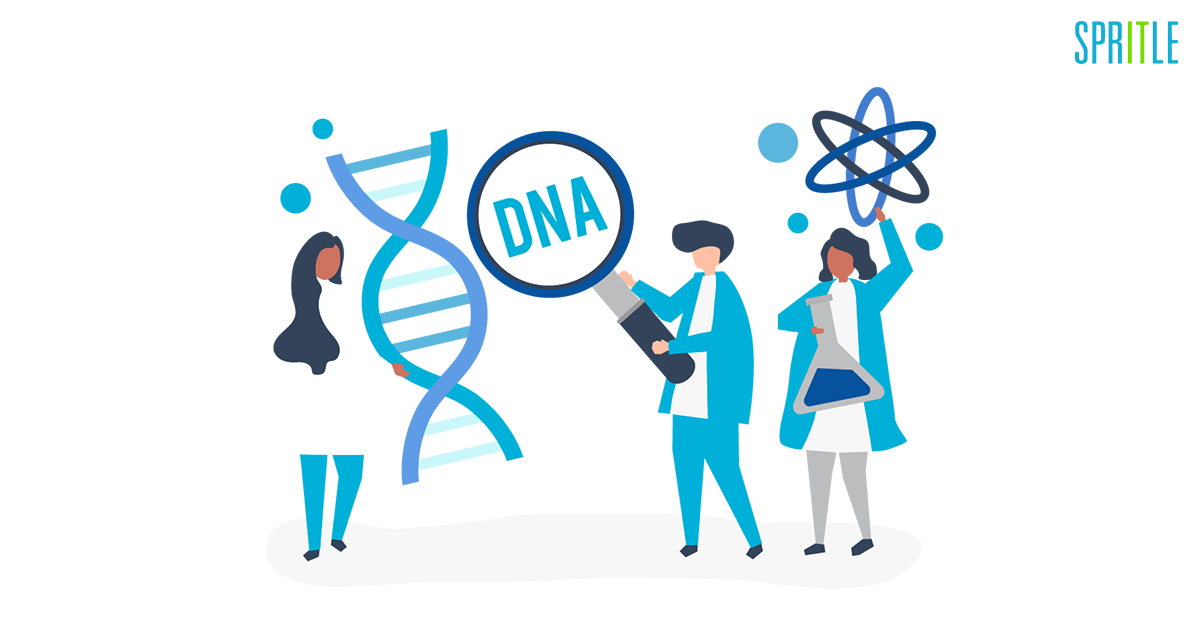Hello, everyone, I know you were looking forward to my next blog post, so here it is with the next interesting topic. Our blog has always been a source of new information. This time it’s about GENOMICS. Have you heard about it? If the answer is no, that is perfectly fine. Because we are about to learn what genomics is in this blog.

What is genomics..?
Genomics is the study of an organism’s genes, including how those genes interact with one another and with the person’s environment. It is a broad term that encompasses all of the DNA in a person’s or organism’s genome, including both the genes that code for proteins and the non-coding regions. It investigates gene expression and the interactions between different genes.
The development of next-generation sequencing technology has been one of the most exciting developments in genomics. This technology enables us to read a person’s or organism’s entire genome in a matter of days, which can be useful in some cases. The emergence of this technology is closely linked to the term genomics.
“The genome that we decipher in this generation is but a snapshot of an ever-changing document. There is no definitive edition.”
― Matt Ridley
Every person’s genome is 99.9 percent identical to everyone else’s, but that 0.1 percent equates to approximately 3 million differences. We can now sequence and analyze genomic data to improve healthcare by assisting in the diagnosis, treatment, and even prevention of disease. Next, we’ll look at the influence of genomics on medicine and healthcare.
Impact of Genomics in Medicine and healthcare:
Don’t be frightened that this genomics revolution is all about sophisticated science that is completely above your capabilities. You will only learn new things if you are willing to go further into them, such as genomics.
- The journey from patient DNA sequencing to a clinical treatment plan is dependent on the integration of the individual’s genomic information with knowledge databases that contain established genotype-phenotype correlations as well as genomic and clinical connections from huge groups of people.
- Individual practitioners’ and genetic counselors’ knowledge is presently relied on for clinical decision-making. These practitioners collaborate as a multidisciplinary team to evaluate the genetic variations discovered by genomic sequencing and devise a treatment strategy.
- The rate at which personalized genomic medicine becomes a reality for the majority of the population will be heavily influenced by the sharing of clinical information, in this case, an individual’s genomic sequence along with their medical record as part of large population datasets accessible to clinicians and translational researchers.
Economic benefits of Genomics medicine:
- Increased precision in risk assessment lowers healthcare expenditures for individuals and the healthcare system by preventing unpleasant responses and needless interventions.
- By simplifying genetic testing to a single study, genomic medicine offers the potential to make genetic illness detection a more efficient and cost-effective procedure, informing patients throughout their lives.
- Genomic information and its application to technological advancements, medical research, and health care will also have a significant impact on the national economy, not only by reducing productivity losses and lowering disease-treatment costs but also by spawning new medical information industries.
- The fast aging of populations, rising healthcare expenditures, and the growing burden of chronic disease pose substantial challenges to healthcare systems across the world.

Opportunities and challenges for the future :
- Construct the infrastructure for EHR databases that combine patient’s genetic and medical information for therapeutic and research purposes, with suitable methods for patient permission, privacy protection, and data security.
- Create national and worldwide knowledge-sharing platforms based on a standardized method of recording, sharing, and analyzing fully integrated clinical and genomic information to provide therapeutically valuable reports
- Establish well-planned and coordinated public and professional education programs across the country to involve physicians, the health workforce, and the community in fully realizing genomics medicinal promise.
I hope now everyone has a clear vision of what genomics is all about. Tend to learn more and share your wide thoughts in the comment section. Will see you in the next blog until then Sayanora…
With lots & loads of positivity, talent & love, the Spritle Team❤️.
Also, do follow us on Facebook, Instagram, LinkedIn, Twitter, and Youtube.
